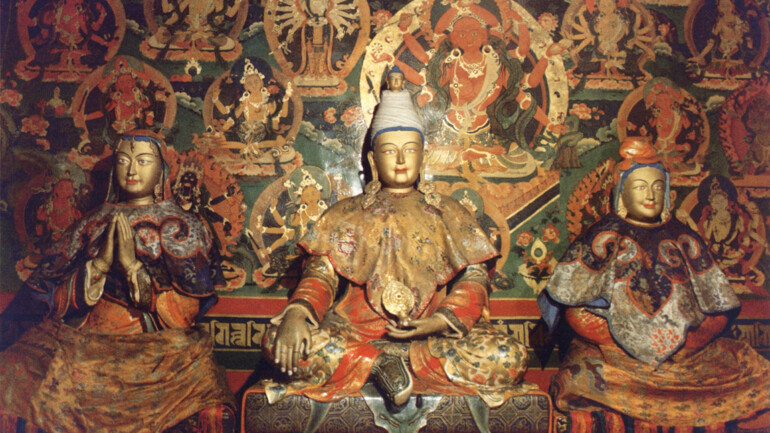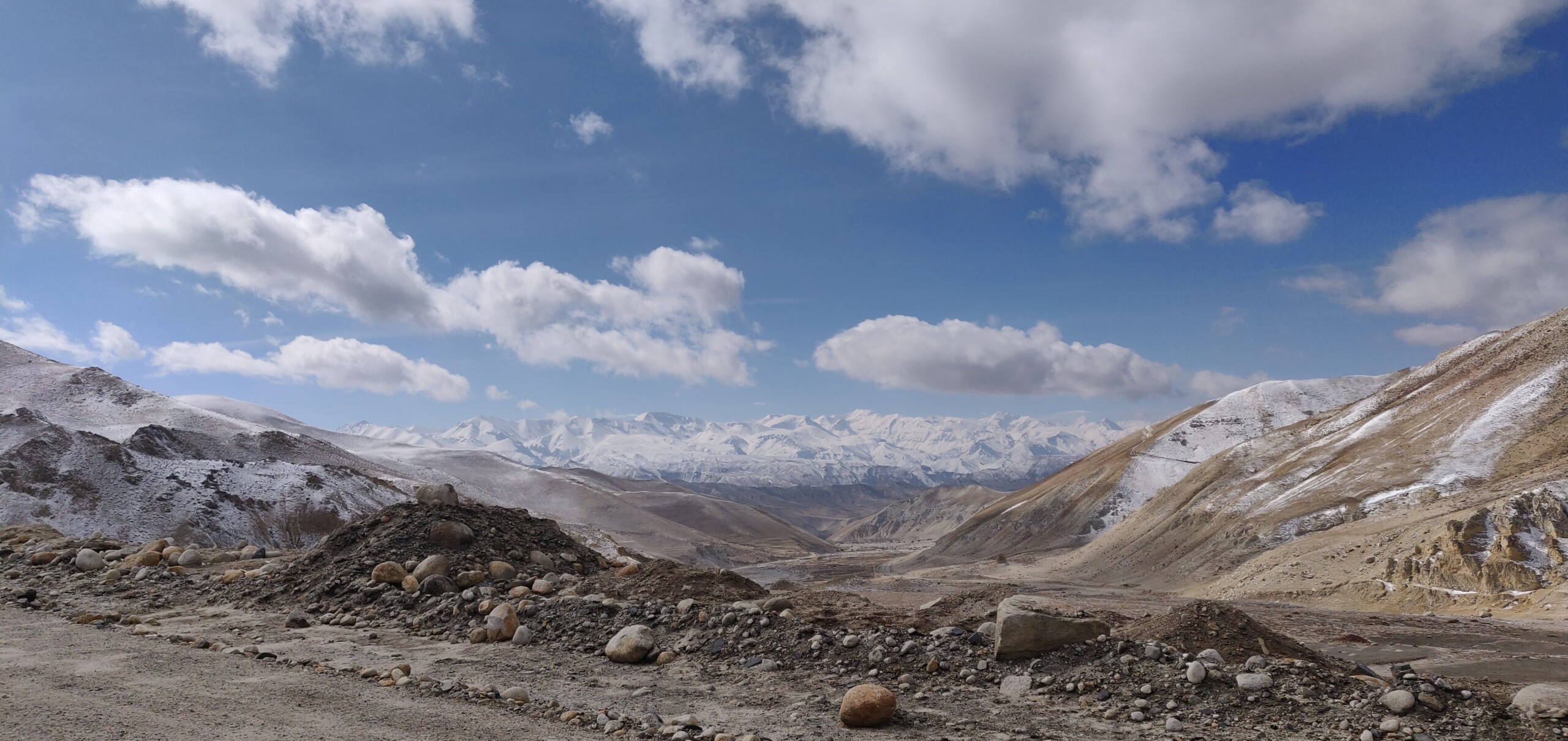The first Buddhist art was aniconic, in that they portrayed the wheel of Dharma, Buddha’s footprints, an empty throne, or a Bodhi tree as representations of Siddhartha Gautama. With the Kushans, this changed. Although this early stage of Buddhist art has not been traced in Nepal, scholars hold that with Mathura as the centre of both political power as well as Kushan artistic tradition, and the development of Mahayana Buddhism, the artistic sensibilities spread to other parts of the subcontinent, such as in Nepal. Buddhism had long been prevalent in Nepal; several kings had bestowed grants upon monasteries to gain merit. Nepali artistic traditions were at first influenced by the Kushans and the Guptas, and subsequently by the art of the Palas of Bengal, a ‘logical successor of Gupta art’, under whose influence ‘Buddhist art reached a new high of development’ ((Banerjee, N. R. “Some Thoughts on the Development of Buddhist Art in Nepal.” East and West 22, no. 1/2 (1972): 63-78. http://www.jstor.org/stable/29755745.)):
‘The Nepali style appears to continue the Buddhist tradition, especially as manifested in the murals in the distant caves of Ajanta… Despite the anarchic political milieu, the bronze casters and goldsmiths seem to have gone about their work in the foundries and shops. Many of them were Buddhist monks working in the viharas… The arrival of so many new deities of endless and complicated forms, together with the demand for them as cult objects, must have stimulated the metallurgist’s skills and accelerated his production. In addition to the local market, from the tenth century on there was also an insatiable demand for cult objects in Tibet.’ ((Slusser, Nepal Mandala))
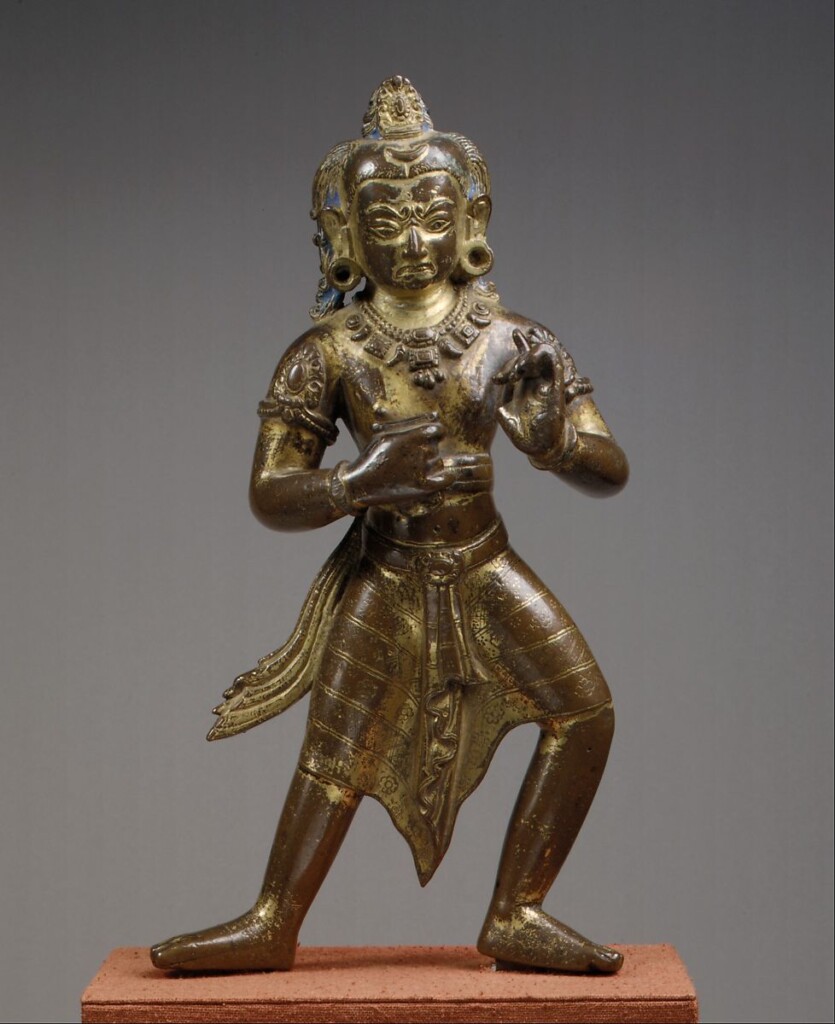
The names of these artists have all disappeared in history, except one. So it is curious that one particular Nepali sculptor has been held up as a shining example of Nepal-China cultural ties in the medieval period, even though we know next to nothing about him from Nepali sources. Aniko (called Arniko in Nepal) was recalled as a beacon of Nepal-China ties after the two countries established modern diplomatic relations in 1956, with the Kathmandu-Lhasa highway being named after him. It seems the first reference to Aniko in a subcontinental source was in French Indologist Sylvain Levi’s Le Nepal, published at the beginning of the 20th century. Nepali historian Baburam Acharya in 1960 attempted to break down his name’s origins – Aniko is not a common Nepali name – and his place of birth, but they seem to be mostly conjectures than absolute truths. ((Baburam Acharya, “Aniko: His Family and Place of Birth”, English translation published in Regmi Research Series Volume 3, originally titled “Aniko, Unka Parivar ra Janmasthal”, published in Himavatsamsrikiti, February 1960.))
The artist known as Aniko (or Anige in Chinese tradition) was probably born around 1244-45 CE. We do not know his exact date of birth, and while Aniko is regarded as being born into the royal family by Chinese sources, Acharya refutes it on the grounds that the Kshatriyas who ruled Nepal then would not practise fine arts or sculptures. Instead, he suggests Aniko ‘probably came of a [Buddhist] sculptor’s family which worked for the royal family of the time.’ Anecdotal evidence holds that he was a child prodigy, that he enquired after a Buddhist stupa’s stambha, bhumi and anda when he was 2. His talent was precocious; by the time he was in his teens, he had mastered ‘painting, modeling and casting images’, and was an expert calligrapher. ((Jing, Anning. “The Portraits of Khubilai Khan and Chabi by Anige (1245-1306), a Nepali Artist at the Yuan Court.” Artibus Asiae 54, no. 1/2 (1994): 40-86. doi:10.2307/3250079. All information about Aniko is primarily derived from Jing’s readings of the Chinese sources.))
Meanwhile, on the northern frontier, Tibet had organised itself under the Phags-pa, the fifth patriarch of the Sa-skya sect of Tibetan Buddhism and the spiritual adviser to Kublai Khan. ‘Phags-pa had initiated the imperial couple into the cult of the Sa-skya sect of Buddhism in 1253 CE… With strong backing from the Khan, Phags-pa not only gained religious and secular power over Tibet but also extended his influence far beyond Tibet. In 1260 he was appointed Imperial Preceptor, the highest religious authority in the Mongol empire. In the same year he was also asked by the Khan to build the golden stupa in Tibet.’ The cultural and artistic inspirations for Tibetan Buddhist art had been the Indian plains and the Nepal valley. With the Islamic invasions in India decimating the centres of Buddhist learning, Nepal remained the last bastion of Buddhist art and studies. And so, ‘Phags-pa turned to Nepal for artists.’ ((Anning Jing, ‘Anige, Himalayan Artist in Khubilai Khan’s Court’, available at https://msu.edu/course/ha/121/jinganige.htm, last accessed on 15 June 2018))
The Phags-pa called for 100 artists from Nepal, but King Jayabhimdeva could only collect 80 – this was a few years after the devastating 1255 earthquake, and it is imaginable the king had fewer artists to call upon. Chinese sources recall another anecdote here: the 80 artists were asked to choose a leader amongst themselves, but nobody was courageous enough for the responsibility, except for Aniko, who was 16 then. When the king tried to discourage him, Aniko is said to have replied, ‘My body is indeed young, but my mind is not.’
Aniko scholar Anning Jing, who in a paper identified two portraits of Kublai Khan and his consort Chabi as possibly Aniko’s works, has noted how the religio-political developments at Kublai Khan’s court could have led him to seek artists from Tibetan Buddhist traditions: ‘Khubilai’s (sic) orders [to build the stupa] was one of the indicators of his acceptance of Sa-sakya teaching, which owed much to the instigation of his wife Chabi. A Tibetan source on the sect…portrays Chabi as an ardent Buddhist…and gives her the credit for persuading [Kublai] to choose Phags-pa as his Buddhist preceptor from among the competing Tibetan monks of different sects.’
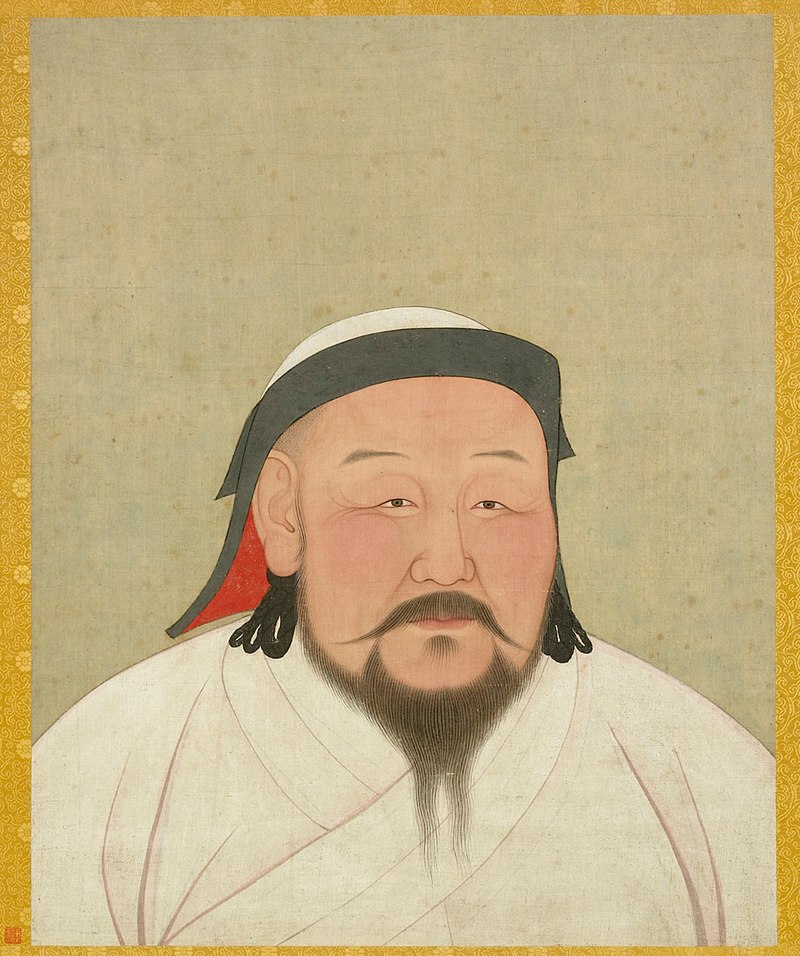
Jing notes that Kublai had broken away from Mongol tradition and elected himself the Great Khan in 1260, the year he gave the order to Phags-pa to construct the stupa. Kublai also acknowledged Phags-pa as his highest religious authority, in a bid to obtain religious sanction from the Sa-skya sect. The decision to hire artists from Nepal to build the stupa was also an indication of a ‘new aesthetic attitude in China nurtured by the influence of Himalayan artistic tradition, introduced with the dissemination of Tibetan Buddhism from the 1260s on.’
While Buddhism had long been practised in Nepal, with Hieun Tsang noting ‘about 2000 religious men who study at the same time the Great and the Small Vehicle’ in the valley, it was only from the 10th century onwards that Vajrayana Buddhism and its iconography became more prevalent, reaching its zenith after the Licchavis and into the Malla period. ((Sylvain Levi, ‘Nepal: Chinese and Tibetan Documents’, Ancient Nepal, Vol. 27, April 1974.)) Several scholars have argued that Nepal valley was an important centre for Vajrayana Buddhism, its studies, and the production of its iconography. Slusser writes, ‘[B]y the Transitional Period Patan, at least, with its interlocking web of viharas, had become essentially a Buddhist university center not unlike the celebrated ones of Bengal and Bihar. From Odantapuri, Nalanda, Vikramshila, and other Indian centers of Buddhist learning, knowledge and teachers streamed into the Nepalese viharas. Nepalese Buddhists went to the Indian centers to study, and from them teachers such as Atisa and Ratnaraksita came to Nepal. Moreover, the Valley viharas, no less than the Indian ones, were centers to which the Tibetans gravitated for Buddhist instruction. In the 11th century the Tibetan Drok-mi, for example, spent a year in Nepal studying Sanskrit, and later became the teacher of the great Tibetan yogin, Marpa.’ ((Slusser, Nepal Mandala))
It was a vibrant period of religious and cultural exchange, and Aniko’s travels to Tibet were only a continuation of the tradition of Nepali traders or artists crossing the Himalayas into the plateau. Aniko would have been trained extensively in Vajrayana Buddhist that would have been popular during his day, which would have worked in his favour. The Phags-pa was impressed; when Aniko desired to return home after the completion of the stupa, the religious leader refused to let him go. Instead, he took Aniko to Kublai Khan’s court with him, initiating him into ‘secret Buddhist treatises’, and raising his social status from a lowly artisan to a favoured associate of the teacher.
Aniko reached Kaiping, where Kublai held court, at the end of 1262. Kublai summoned him to court, and is said to have observed Aniko for a long time without speaking. Kublai then asked him if he was afraid to come to his court. Aniko replied, ‘The sage regards people in all directions as his children; when a son comes to his father, what is there to fear?’ Kublai then asked him why he had come to his court. Establishing his deep Buddhist credentials, Aniko is said to have replied, ‘My family has been living in the west for generations. I accepted the edict to go to Tibet and worked on the stupa for two years. I saw constant wars there and wish Your Majesty could pacify there. I come on behalf of sentient beings,’ eventually impressing Kublai by saying, ‘I take my mind as my teacher.’
Kublai tested Aniko by asking him to repair a bronze acupuncture statue with ‘complicated arteries and veins’ that had been damaged beyond repair according to the other court artists. The statue was a diplomatic gift, and Aniko worked hard on it single-handed for three years. The restoration immediately raised his status at court, especially when all the other artists said the repair could only have been the work of ‘divine hands’.
Aniko subsequently worked on a multitude of temples and stupas, some directly under the queen Chabi. In 1273, he was appointed ‘Supervisor-in-chief of All Classes of Artisans’. ‘With thousands of artisans under him, he was responsible for religious images, imperial portraits and other projects commissioned by the imperial household.’
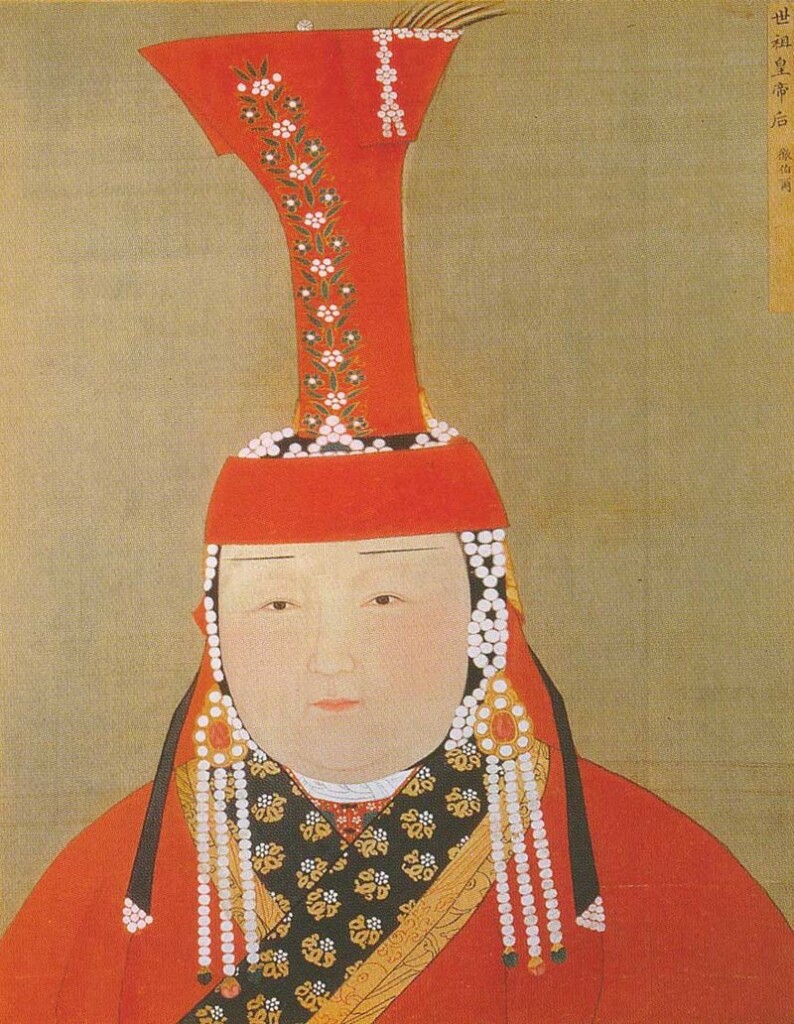
Today, the best example of Aniko’s legacy is the White Stupa in Miaoying temple in Beijing, which in 1961 was declared a national treasure. But in his lifetime, he is said to have worked on three stupas, nine temples, and two Confucian shrines among countless other portraits and sculptures. He was lavishly rewarded; the queen had sent officials with 500 taels of gold to escort his wife to China in 1276. He was further married off to seven Chinese and two Mongol women, one of them a noblewoman. In 1279, he was granted 15,000 acres of farmland near the capital, with over a thousand farmers, and 100 head of cattle for the construction of the White Stupa. He became a ‘sinicized gentry’, adopting the Chinese sobriquet Xixuan (‘Western Studio’), a reference to his residence.
Kublai Khan died in 1294, and Aniko began to serve the new emperor Temur, building him the Nanshansi temple at the sacred Wutai mountain – identified as the home of the Bodhisattva Manjushri, who’s said to have drained the Kathmandu valley of its waters with his flaming sword. Aniko continued to work till the end, and his death in 1306 may have been hastened after the new empress ordered the destruction of Buddhist Tantric deities he had built for a temple. Jing writes, ‘The incident was a catastrophic blow to Anige. He had devoted his whole life to the making of Buddhist images and for more than 40 years had served prodigiously at the court… [S]uddenly some of his works were smashed, his faith was challenged, and his values were shattered. For Anige, the agony must have been unbearable.’
A few months later, he fell ill. Despite treatment, he passed away two days later, on 9 March 1306, at the age of 62. Temur halted court to mourn his passing, and rewarded his family with 25,000 taels of silver. He was cremated according to Nepali custom, and his ashes buried in a stupa. The official inscription on his stele reads:
‘When the sage (Kublai) arose,
All could behold.
He knew he should come,
As if to parent’s home,
Like all the spokes
that merge in the hub,
Like all the brooks
that flow to the ocean.
With sincere minds
and open arms,
Each of them finds
the other man’s heart.’

